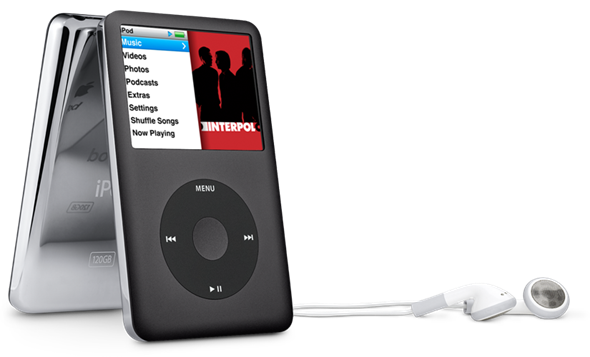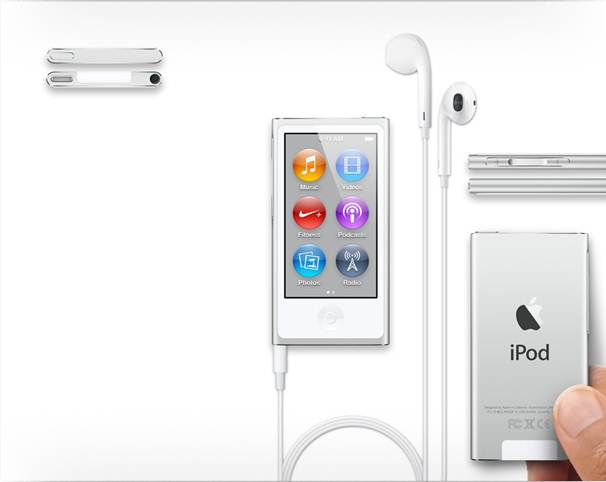iPod classic

Lacking the connectivity and wide screen of
the iPod touch and the nano’s array of tricks, the iPod classic doesn’t feel
new or innovative. Rather, it’s a tried and tested way to carry around your
media. It’s brilliant if you want to take a large collection of your media with
you. Compared to the iPod touch and nano, though, it’s not very sexy.
The latest version is 160GB, which
represents excellent value for money. It also offers superb battery life -
it’ll play your tunes for almost two days before the battery dies. And despite
the new iPod’s touchscreen wizardry, the click-wheel is still a genuine design
classic.
If capacity is your prime concern, the iPod
classic is the one to own. But it’s not flawless. The interface is slicker and
more helpful, but ultimately it’s no easier to find and play your music on this
iPod than it is on a 5G iPod. Given that the interface adds more eye candy than
functionality, it’s a pity that it appears to slow the iPod down.
However, those new to the iPod or trading
up from the first-gen iPods will undoubtedly find these quirks acceptable.
iPod Touch

The iPod touch has had a bright update,
with new colours added including pink, yellow and blue, appealing to the
teenage market that the device dominates. It hasn’t just had a makeover,
though. The devic gains the same in Retina display as the iPhone 5, and this
widescreen means our biggest wish for the iPod touch has been granted.
Like the iPhone 5, the device has grown a
little taller, but it’s now just 6.1mm thick and weighs 88g, so you’ll hardly
notice it’s in your pocket. The touch also has an A5 chip, one generation up
from last year’s A4-equipped iPod touch, which means that the iPod touch can
run Sin — Apple’s voice-recognition software.
A 5-megapixel iSight camera has been added
to the back of the touch, which is capable of recording 1080p video.
Apple has also introduced the Loop, a wrist
strap that attaches to the back The touch is set for release in October.
iPod nano

In the case of the iPod nano, bigger is
definitely better, but this is by no means a big nano. Compared to its
predecessors, this really is a feat of engineering. It’s the thinnest Pod model
yet, a massive 50 per cent leaner than the previous generation at .mm, and
while it’s longer than its square predecessor, it’s shorter than all bar the
squat third-generation version, and is narrower than the previous model too. It
really is a tiny device that packs a lot of functionality into the palm of your
hand. The nano also has a built-in pedometer for fitness fans, though the lack
of a clip could prove annoying.
The multi-touch display is 2.5in thin, and
is sufficient for the slimmed down operating system that the iPod nano runs.
We can see the new colours appealing to the
younger market, though it’s a bit pricey at US$193.5. It’ll be available in
October.
iPod shuffle

We weren’t big fans of the
third-generation, button-free shuffle. Its control system gave us nightmares
and its form factor was perfect fodder for an anti-Apple advertising campaign
or parody. It seems that Apple has also fallen out of love with the buttonless
iPod shuffle.
With the redesign of the fourth-generation
iPod shuffle, Apple has brought back a classic design that works well with any
set of headphones. At US$58.5 for 2GB of storage, it’s not only the perfect
entry-level iPod, it’s also a solid second device for iPhone users who want to
keep it simple while exercising.
While the shuffle’s reduced size makes it a
bit harder to clip on clothing than the second-generation model, it’s hard to
quibble about small details without focusing on the big one: Apple has backed
off its misguided design of a buttonless iPod shuffle and returned to the right
path.
Throw in the VoiceOver features and the
longer battery life, and it’s easy to say that this is the best iPod shuffle
Apple has ever made.